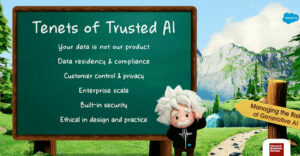
As I’ve written before, social CRM best practices don’t exist — but only because in order to be most effective, each business needs to tailor its social CRM approach to its specific customers. However, that doesn’t mean you’re doomed to a long evaluation process and a tough spell of trial-and-error efforts that won’t pay off for years.
There are other CRM-related activities your company probably already engages in, and the things you learn from those activities can give you a foundation of knowledge for building a social CRM strategy.
For example, in developing marketing messages for your customers, you probably have come across the idea of developing customer profiles — in other words, articulating the attributes of people who are the best fit for your product or service, and thus are also the most likely to buy from you.
While many businesses become overwhelmed or intimidated by the sheer scope of social media, smart companies take a step back and look at what’s worked in the past.
Profile Building
If they were once effective at defining customer profiles, there’s no reason companies can’t extend the same concept into developing social customer profiles. In other words, they can augment their regular customer profiles — company size, needs, industry and so on — with the social media channels that businesses with those attributes frequently use.
If they sell B2B, and if they identify decision-makers as part of the sales process, they can become even more granular and identify the channels those decision-makers use.
Channel Scoring
Another marketing process that can be used as a model is the idea of lead scoring, or using the activities or attributes of potential customers to evaluate their importance as a lead. The same can be done to determine the most important social channels — call it “channel scoring.”
In other words, look for the channels customers and potential customers use, weigh the volume and quality of their participation in those channels, and look for the use patterns of leads who have turned into customers.
By doing this, you should be able to develop a flexible way to determine the best places to focus your social CRM efforts, and how your approach should evolve as your target customers’ social behavior changes.
Engage, Track, Score
Marketing automation is currently helping smart businesses get much better at nurturing leads. From a marketer’s point of view, that means continuing to engage with the customer over time (often via email) until the lead indicates something that suggests readiness to buy.
Nurturing potential customers is even more readily done through social media channels. Don’t forget that social CRM needs to be a two-way endeavor, and engaging with customers on forums, Twitter, LinkedIn and Facebook is part of the deal.
Just engaging isn’t really enough, though — you then need to track those engagements, evaluate those interactions, and incorporate the information about them into your nurturing and scoring systems.
This is something few are doing today; most interactions are of a fire-and-forget nature, and their impact may be later detected through sentiment-monitoring tools, but there’s little direct impact on internal lead scoring.
Understanding that these two-way interactions can have an impact on potential customers’ readiness to buy and on their view of your business — and doing it rapidly, before the effect of that conversation wears off — can not only translate into leads and potential sales, but also highlight how social CRM investments can pay off in concrete and measurable ways.
Not a Huge Leap
Just as social CRM isn’t a brand-new technology — it stands on the shoulders of traditional CRM — the best ways to use social CRM aren’t necessarily new, out-of-the-blue concepts.
In many cases, they’re adaptations of concepts you may already be using. If you’re stumped about how to make the jump to social CRM, maybe your best bet is to stop trying to look over the horizon and instead get your inspiration from some of the effective things you’re already doing.























































Great article but what tools are available for measuring social media?